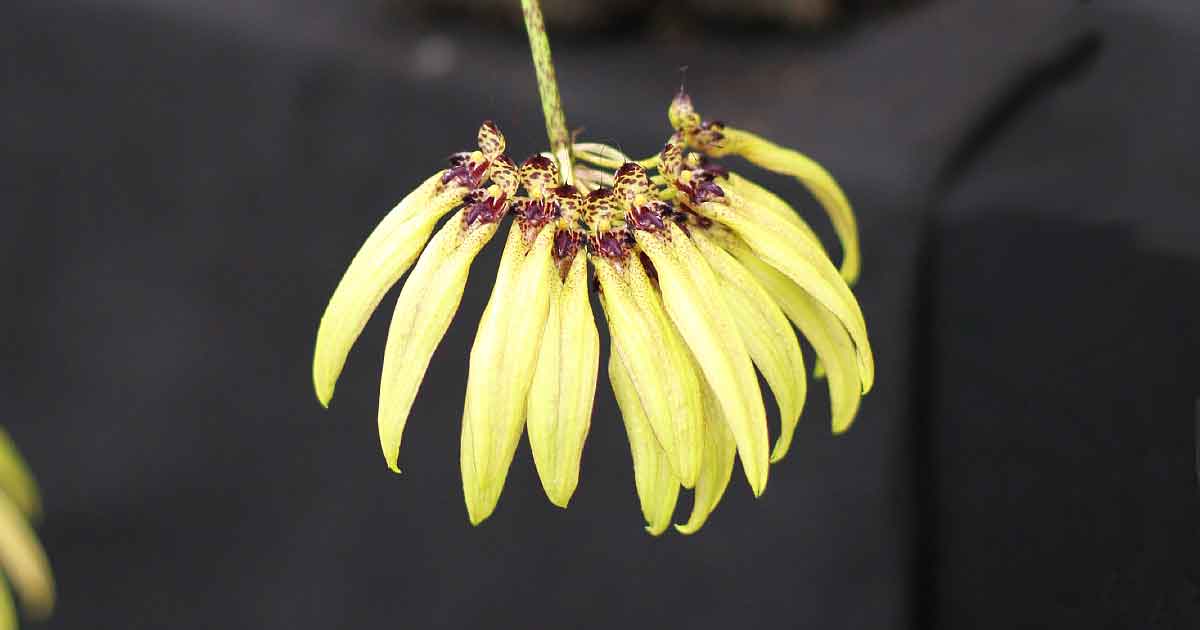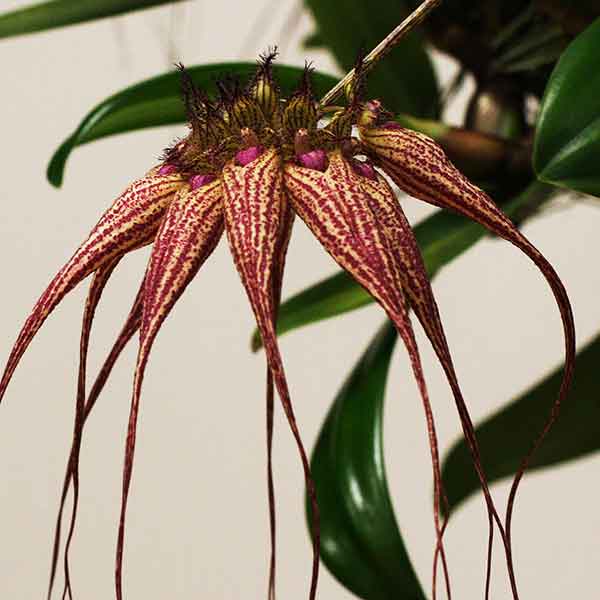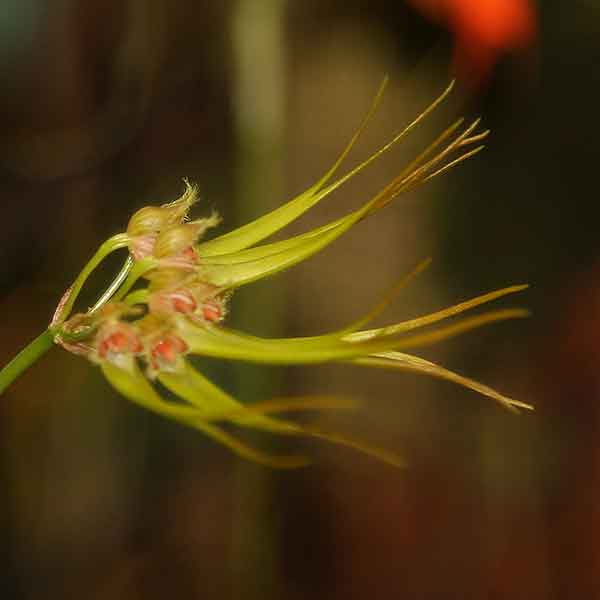
With over 2000 Bulbophyllum orchids are one of the largest genus of orchids, many weird and wonderful species both epiphytic and lithophytic.
Many species come from Thailand and Vietnam, some from Africa, South America and Australia.
This wide range of climate zones means slightly different care, all grow in warmer climate zones, some from near sea level, others form mountains regions.
An interesting characteristic is the hinged lip, it moves around when insects land on it and that regarded as an add to pollination. Bulbophyllum bicolor is a spectacular species and worth seeking out.
How to grow Bulbophyllum Orchids.
As with a number of Orchid Varieties, Bulbophyllum, with so many species, care will differ, however some general care notes read as follows.
Light
In general filtered bright light with some morning sun. Some species will grow in less light, however all should be protected from afternoon sun.
Temperature range

In general 60F to 80f. Look for where your species comes from, if its from a warmer zone, then higher temperatures say 70 – 80F. For cooler zones (which will still be warm) then 60f – 70 f.
Those that grow in mountainous areas, the lower end of the temperature range. Those from coastal areas, the higher end.
Always keep Bulbophyllm orchids away from cold drafts and also away from hot heating ducts as these will lower humidity and this is an orchid that likes humidity’ Aim for 60% humidity as a general rule.
Watering
This will depend on the growing medium and the climate you are growing them in.
In general keep them moist at all times, but pay attention to those species that naturally grow in a climate where they have a dry period, and this could be either winter or summer.
Growing Medium (substrate)

You can mount most species and tree fern slabs or cork slabs are a great solution for this. Otherwise use a sphagnum moss perlite mix with a charcoal or biochar lower layer
The best potting mixes for Bulbophyllum orchids include bark, perlite, coir (coconut fiber), and sphagnum moss. You can also use combinations of these, sometimes with an additional bottom layer of charcoal.
You should not need to repot very often, every 4 – 5 years if you have the right growing medium.
Problems
- Bulbophyllum not flowering
Try a little more light and a little less water. - Fungus in the growing medium and on the Orchid.
Generally due to high humidity and poor drainage. Use a fungicidal spray when required. - Bad Smell from Bulbophyllum
Many species don’t smell that great, they emit a bad odour that is designed to attract pollinators.

